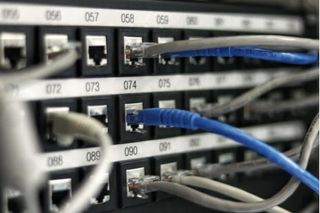Why is IPv6 not gaining traction despite depletion of IPv4 addresses globally?
Use of IPv4 will continue for the next decade, through leasing, as only 25% of the internet is accessible over IPv6

Why hasn’t the adoption rate of the sixth generation of Internet Protocol (IPv6) gained traction despite the many warnings issued by many international organisations including RIPE NCC, the regional internet registry overseeing IT infrastructure in Europe, Middle East and portions of Asia?
Chafic Chaya, Regional Communications Manager for Middle East at RIPE NCC, told TechRadar Middle East that its partly because of using technical workaround solutions and the misconception that there is no demand from the end-users, that little content is reachable over IPv6 or that Customer Premise Equipment (CPE) such as modems are not geared to connect over IPv6.
However, he said that major content providers such as YouTube, Facebook and Netflix are increasingly reachable over IPv6, and as outdated CPE is replaced by modern IPv6-compatible gear.
Furthermore, he said that the (IPv4) pool has been exhausted in November this year, which means that networks in Europe, the Middle East and parts of Central Asia are no longer able to receive “new” IPv4 addresses.
Vincentas Grinius, CEO of IPv4 lease marketplace Heficed, said that the global IPv4 address depletion remains an issue for growing organisations that are not ready for the switch to IPv6.
He said that IPV4 is a hot topic right now and will be for the next 10 years as the internet penetration rate is growing fast and the IPv6 does not cover the whole of the internet.
The IPV6 was introduced in 1999 but only 25% of the internet is accessible over IPv6 in the last 20 years while the rest 75% is on IPv4.
Are you a pro? Subscribe to our newsletter
Sign up to the TechRadar Pro newsletter to get all the top news, opinion, features and guidance your business needs to succeed!
With IPv4, the internet can have 32-bit addresses and provides approximately 4.3 billion addresses but with IPv6, it can have trillions and trillions of addresses at 128 bit.
- Intelligent connectivity to drive growth and create value across industries
- Why network visibility, manageability and security is key in digital transformation
- The internet has become intelligent and is ready for the internet of things era
Investment is biggest hurdle
The IPv6 is highly important due to the dearth of internet protocols and the inability of IPv4 to meet the growing demand in light of the rapid growth of the internet. The demand for IPv6 will grow as more internet of things devices are going to be connected to the network.
Salam Yamout, Regional Director for Middle East at the Internet Society, said that all the networks in the Arab region are relatively new and they don’t have any issues to go on IPv6 but unless everyone moves to the IPV6, the network operators have to maintain both IPv4 and IPv6 at the same time.
Grinius said that the investment for IPv6 is the biggest hurdle and so, IPv4 is gone stay for a while.
Chaya said that networks are increasingly employing complex workarounds to compensate for a shortage of IPv4 addresses.
However, he said that workarounds such as Carrier-Grade Network Address Translation (CGNAT) – sharing multiple users by IP - add to the running costs for an operator and this also makes Law Enforcement Agencies (LEAs) work difficult and challenging to pinpoint the culprits behind cybercrime. “While network engineers might be up to the task at a technical level, other immediate business concerns often end up taking priority due to a modest awareness at the C-level and decision-makers,” he said.
Grinius added that some organisations are in control of thousands of IPV4 addresses, and about 20% are often unused.
“They hold on to the IP addresses, either for future growth or to sell it when they get a better price,” he said.
IPv4 addresses, originally a free resource, have become a commodity and a strategic asset for businesses.
IPv4 prices are going up
According to Ripe NCC, UAE was the second country in the Middle East to transform to IPv6 after Saudi Arabia.
“We need another two decades or more to get IPv6 up and running. However, IPv4 prices are going up quickly. Right now, the price momentum is around 25-30% per year. A year ago, IPv4 price used to be around $18 but now, it has gone up to $25 per IP address,” Grinius.
People can buy an IPv6 address from a register by becoming a member for $1,500 per year and an IPv4 address can be leased for a minimum of 25 cents a month.
The right solution for small- and medium-sized businesses or enterprises, instead of purchasing an IP address, he said is to lease an IP address.
However, Grinius said the market is hardly regulated and scattered throughout countless IP address brokers, leading to murky practices and pricing.
He said the demand and supply are growing fast and the biggest demand is from the US, Europe and Asian region. We work with many Arab countries, including the UAE.
Chaya said that a shortage of IPv4 addresses create a lot of problems for a network that is looking to grow or add new users, many networks today are attempting to mitigate this scarcity by acquiring surplus addresses from other networks via the IPv4 transfer market or brokers, or by deploying address sharing technologies such as CGNAT.
“While these approaches may make sense in the immediate term, neither one solves the underlying problem – which is that there are not enough addresses in IPv4 to support an internet that is as large as the one we have today,” he said.
Most Popular

